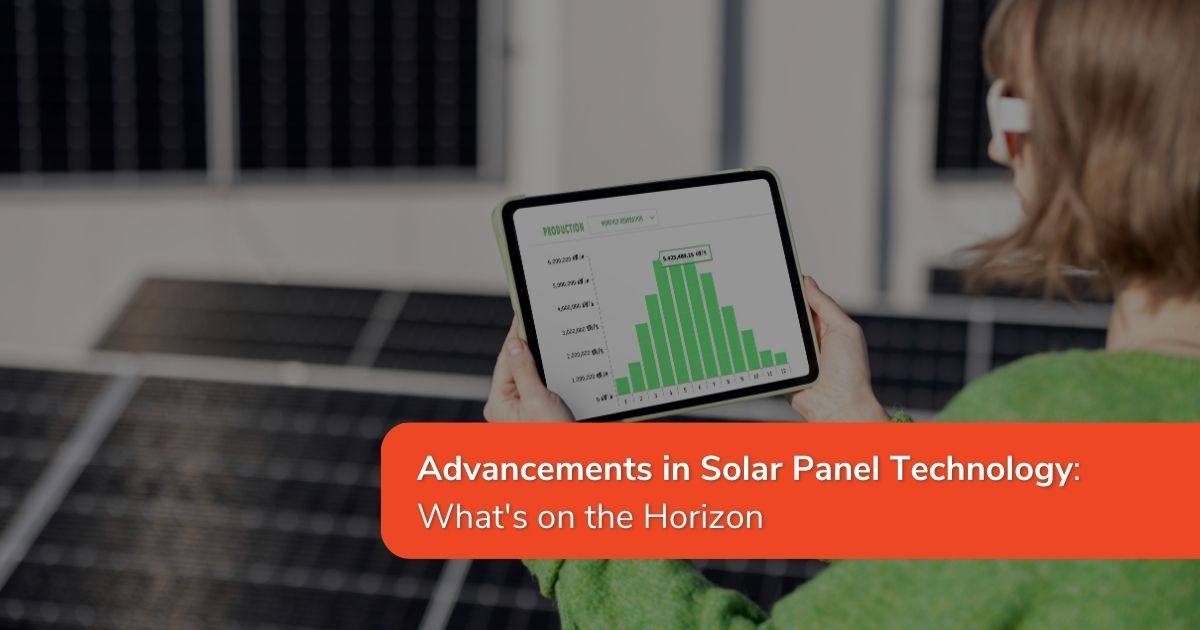Advancements in Solar Panel Technology: What's on the Horizon

Amid a growing global interest in renewable energy, solar power stands out as a beacon of eco-friendly and sustainable technology. As we look to reduce our carbon footprint, understanding and embracing the emerging technologies in solar panels is critical for both consumers and industry leaders. But what does the future hold for solar technology, and how might it impact you as a homeowner or a business owner considering the switch to solar energy? Let's delve into the horizon of solar panel advancements and uncover what lies ahead.
The Solar Landscape Today
Today's solar market offers a range of photovoltaic technologies, including monocrystalline and polycrystalline silicon cells, which dominate the industry. These technologies are known for their reliability and are widely deployed on rooftops and in utility-scale solar parks. However, they still face challenges around efficiency and energy storage.
Efficiency and Cost
While the efficiency of solar panels has steadily improved over the years, there is still a need for more cost-effective solutions. Current technology is pushing the boundaries, but the balance between efficiency gains and increased costs is delicate.
Limitations
Traditional solar panels are rigid and require a considerable amount of space for installation. This means they may not be suitable for every roof type or in cases where space is limited.
Upcoming Innovations: The Future is Bright
The research and development in solar panel technology are promising, with several innovative solutions on the brink of mainstream adoption.
Perovskite Solar Cells
Perovskites are a class of materials that have shown significant potential for solar applications. They offer the promise of higher efficiency and lower manufacturing costs than traditional silicon-based panels. One of the most exciting aspects of perovskite solar cells is their ability to be flexible, which could open up new applications in building-integrated photovoltaics and portable devices.
Bifacial Solar Panels
Bifacial solar panels capture sunlight on both the front and back of the module, effectively doubling the energy output. This technology is especially useful in environments with high levels of reflected sunlight, such as rooftops with white membranes or snow-covered ground.
Solar Paint
Imagine turning any surface into a solar energy generator. This is the concept behind solar paint, which contains light-sensitive compounds that generate electricity when exposed to sunlight. While still in the experimental phase, solar paint could revolutionise the possibilities for solar installations.
Solar Roof Tiles
Solar roof tiles are a type of solar panel that mimics the look of traditional roof materials. This aesthetic solution is attractive to homeowners who are concerned about the appearance of their rooftops. As an advanced technology, it's expected to integrate higher efficiency rates and durability.
Benefits of Advanced Solar Panels
Embracing these new solar technologies promises several advantages, not just for the environment but also for consumers and businesses.
Increased Efficiency and Energy Production
The next generation of solar panels is poised to significantly increase efficiency, meaning they can generate more power per square metre. This could result in systems that take up less space while producing more electricity, a valuable proposition for many properties.
Reduced Costs and Payback Period
With innovations in materials and manufacturing processes, the cost of advanced solar panels is expected to decrease. As a result, the payback period—the time it takes for the energy savings to offset the cost of the system—will also shorten, making solar energy more affordable for a wider audience.
Environmental Sustainability
The overarching benefit of all advances in the solar industry is the positive impact on the environment. Higher efficiency means less land is required for large-scale solar projects, and lower costs make it easier for individuals to make the switch to clean energy.
Challenges and Considerations in Adoption
While these advancements are promising, there are still challenges to address before they become the standard in solar energy.
Manufacturing Scalability
For new solar technologies to make a significant impact, they must be able to be manufactured at scale cost-effectively. Currently, many of these emerging technologies are produced at a small scale in research laboratories.
Durability and Reliability
Solar panels are expected to have a long lifespan – usually around 25 to 30 years. Any new technology must establish a track record for durability and reliability to ensure it can withstand the rigours of real-world weather conditions.
Integration with Existing Infrastructure
New solar technologies need to fit into the existing energy infrastructure. This includes ensuring compatibility with inverters, batteries, and other components, as well as navigating regulatory hurdles.
Implications for Homeowners and Businesses
The advancement of solar panel technology will have a direct impact on those looking to invest in renewable energy solutions.
Potential Savings on Electricity Bills
As advanced solar panel systems become more efficient and cost-effective, homeowners can expect increased savings on their electricity bills. These savings, along with potential government subsidies, make the transition to solar increasingly attractive.
Increased Property Value
Properties with advanced solar panel technology are likely to have a higher market value. As solar systems become more commonplace, they may even become an expectation among homebuyers.
Government Incentives and Subsidies
Government policies to promote renewable energy may play a crucial role in supporting the adoption of advanced solar technologies. These incentives can range from tax credits to feed-in tariffs.
Conclusion: Embracing a Solar Future
The journey to a fully renewable future is an evolving one, and advancements in solar panel technology represent significant strides in that direction. While challenges remain, the potential benefits for the environment and consumers alike are too promising to ignore.
As a homeowner or business owner, staying informed and working with a trusted solar provider can help you tap into the latest solar innovations. By considering these emerging technologies, you can play a part in harnessing the abundant power of the sun to create a sustainable, clean energy future.
The horizon of solar panel technology is not just a distant aspiration – it's a tangible path forward that we can take, one advancement at a time. Whether it's through the adoption of perovskites, bifacial panels, or even solar paint, the days of relying solely on conventional solar cells are numbered. The sun is setting on outdated energy practices, but its rise ushers in a new dawn of possibilities for smart, sustainable living.
%20(1).png?width=265&height=96&name=www.smartenergyanswers.com.auhs-fshubfsSmart%20Energy%20Answers%20Logo%20(HIRES)%20(1).png)

.png?width=514&height=121&name=Tesla%20Powerwall%203%20(new).png)







